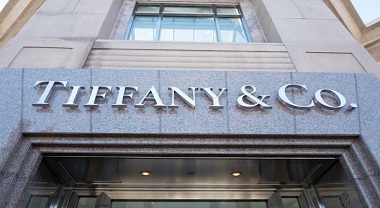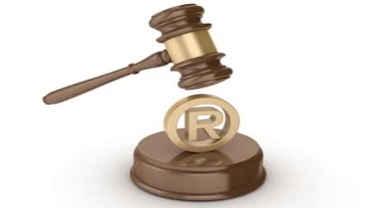Use In Good Faith? Will That Amount To Infringement
The case arose when Tiffany, through a customer of Costco, was made aware of the unbranded diamond engagement rings containing the word “Tiffany” being sold in Costco stores. Tiffany is world renowned jewellery brand famous for selling diamond engagement rings since 19th century. It owns multiple trade mark registrations for the word “Tiffany” in connection with “Decorative Art Objects Made in Whole or in Part of Precious or Semiprecious Metals” among others. The design of its engagement rings is famously called the “Tiffany settings” which is a style of six-prong diamond setting.
[Image Source: gettyimage]
Costco is a chain warehouse store which sells goods of various categories including jewellery. It sells rings made in various settings all of which are unbranded and indicates the name of the corresponding ring’s setting style.
Tiffany filed the present application against Costco two months after it stopped using the “Tiffany” mark in the District Court for the Southern District of New York, alleging trademark infringement, counterfeiting false advertising among other things. Costco contended that “Tiffany” is not just a brand name but also a recognised term for ring setting which is not infringement as they have been using it in good faith.
Judgment
The district court concluded in its order that Costco could not establish its claim of ‘fair use’ under the law and it infringed the petitioner’s mark resulting in counterfeiting. It also found Costco liable for unfair competition under New York Law and awarded Tiffany with punitive damages under the same. In total the court awarded trebled profits of more than 21 million dollars to Tiffany.
Appeal
In pursuance of this Costco filed the present appeal. Over the issue of trade mark infringement the Circuit court held that the district court erred in both of their conclusions namely- Costco’s use of word “Tiffany” would cause confusion with Tiffany’s registered mark and Costco’s use of the word does not constitute fair use.
Under the Lanham Act a trademark infringement occurs when- (1) the subject mark is entitled to protection and (2) when the copied mark is likely to be confused with the subject mark. “A plaintiff does not have to show necessarily that consumers would believe that the defendant’s goods or services are from the same source as those of the plaintiff.” The Sports Auth., Inc. v. Prime Hospitality Corp. , 89 F.3d 955, 960 (2d Cir. 1996). Rather, a defendant may also be liable for trademark infringement if its “actions are ‘likely to cause confusion, or to cause mistake, or to deceive as to the affiliation, connection, or association’ of the defendant’s goods or services with those of the plaintiff.” Id.
It is essential to prove that numerous customers have probably been confused as to the source of that product. While it is established that Tiffany being a valid mark is entitled to protection, the court herein determines whether the use of word “Tiffany” by Costco was likely to cause confusion with Tiffany’s registered mark. The Court applies the Polaroid test (Polaroid Corp. v. Polarad Elecs. Corp. , 287 F.2d 492 (2d Cir. 1961)) which sets out eight factors: “(1) the strength of the trademark; (2) the degree of similarity between the plaintiff’s mark and the defendant’s allegedly imitative use; (3) the proximity of the products and their competitiveness with each other; (4) the likelihood that the plaintiff will “bridge the gap” by developing a product for sale in the defendant’s market; (5) evidence of actual consumer confusion; (6) evidence that the defendant adopted the imitative term in bad faith; (7) the respective quality of the products; and (8) the sophistication of the relevant population of consumers”.
Over the three points of contention raised by Costco, the court gave the following analysis:
Actual Confusion- On the question whether Costco’s costumers were actually confused by the use of word “Tiffany” for engagement rings, the court overruled the District court’s decision and held that Tiffany failed to provide persuasive evidence sufficient to resolve the customer-confusion factor in its favor as a matter of law.
Good Faith- In analysing whether Costco used the mark to exploit the good will and reputation of Tiffany and thus acted in bad faith, the court disagreed to the district court’s decision here as well and held that Costco intended to sell jewellery that used Tiffany’s six prong ring design as opposed to an intent to have its jewellery pass as Tiffany’s. Thus, it cannot be held that the defendant acted in bad faith.
Consumer Sophistication- The court again reversing the district court’s conclusion observed that consumers buying engagement rings are most likely to have a knowledge as to the rings they want to purchase and be sufficiently attentive and discriminating as to recognize that Tiffany had nothing to do with Costco’s diamond engagement rings.
In finality the Court in the present case held that Costco’s signs were not confusing, the use of word was in good faith and that it did not use “Tiffany” as a trade mark. It rejected Tiffany’s claim of trademark counterfeiting. The court, however, declined to address the question whether punitive damages would be available to Tiffany.
Author: Saransh Chaturvedi (Advocate, LLM (IIT Kharagpur) – an associate at Khurana & Khurana, Advocates and IP Attorney, in case of any queries please write back us via email at support@ipandlegalfilings.com or contact us at IP And Legal Filings.




